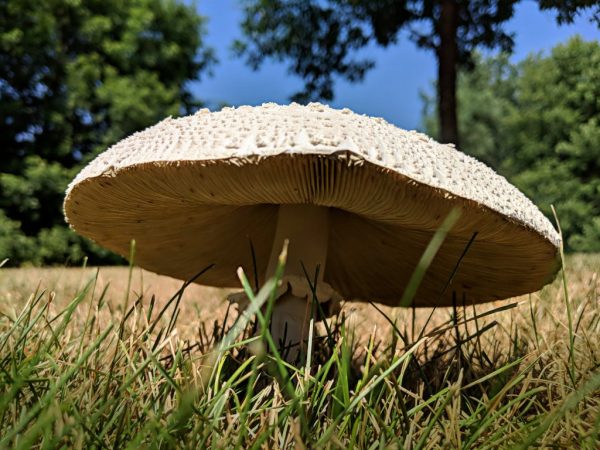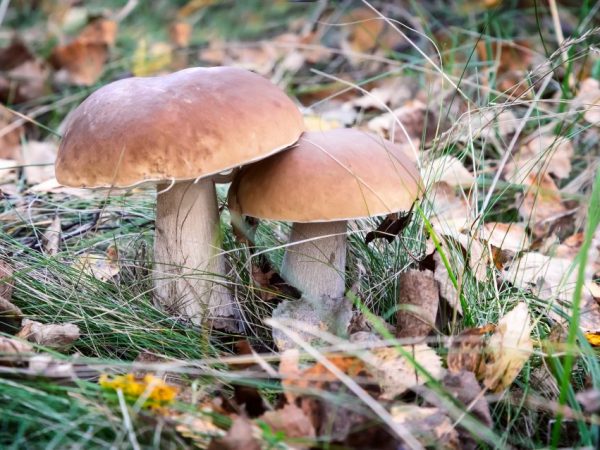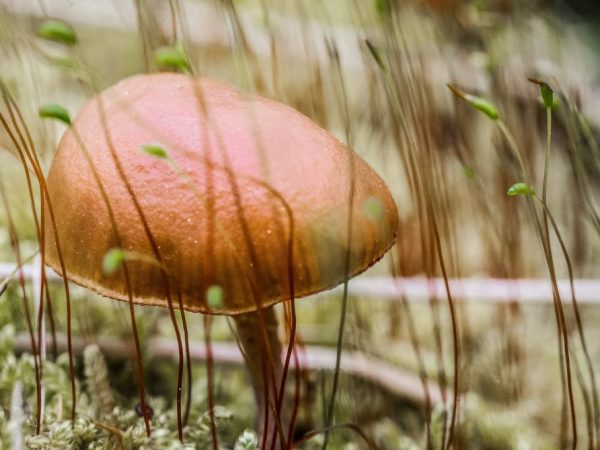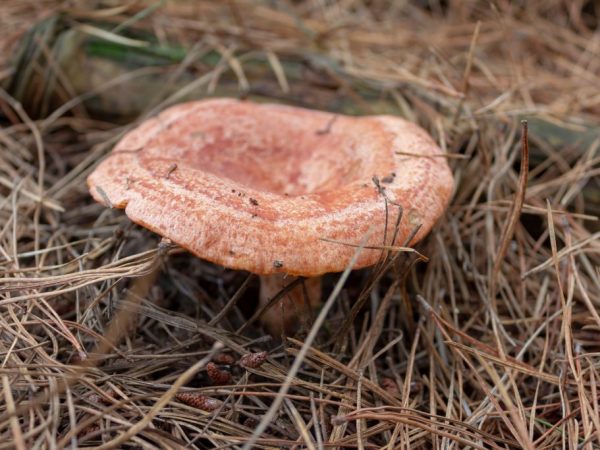Features of cap mushrooms
Hat mushrooms are the highest representatives of the mushroom kingdom. Nature arranged it so that they combine some of the characteristics of animals and plants. Most grow in forests and forest-steppe zones, their mycelium occupies the topsoil. People, for ease of discrimination, divide them into edible and inedible.

Features of cap mushrooms
Structure
Representatives of the kingdom of mushrooms have a peculiar structure, similar to the structure of plants and animals. They are united with the flora by the following features:
- the cell wall is located above the plasma membrane;
- organisms are attached to soil or other surface;
- reproduction occurs by spores;
- the presence of vacuoles;
- absorption method of nutrition;
- unlimited growth.
Common features with fauna:
- chitin is a part of cellular structures;
- heterotrophic nutrition;
- the cells do not contain chlorophyll and chloroplasts (and other plastids as well);
- metabolic product - urea;
- the main reserve nutrient is glycogen.
The structure of the cap mushroom is more complex than that of all representatives of this kingdom. The total size of these multicellular organisms can reach hundreds of meters. Their closest relatives are bacteria-like unicellular yeasts and the ubiquitous mold. This group of mushrooms consists of two parts - the mycelium (vegetative body) and the fruiting body, each part has its own function and characteristics.
Mycelium
What people used to call a mushroom is only a temporary reproductive organ. The main part is the mycelium, or mycelium, it grows underground and can live for hundreds of years. It consists of elongated cells with several nuclei. The cells are collected in threads - hyphae. The mycelium looks like a thin spider web.
There are different types of mycelium:
- The film is a dense interlacing of flat hyphae that serves to provide nutrition and absorption of nutrients from the substrate.
- Cords are intergrown filamentous hyphae, which are short or long strands that anchor in the soil and help the mycelium to spread to new areas.
- Rhizomorphs are thick threads, have 2 layers - outer, dense dark and inner, loose, light.
- Rhizoctonia are thin air cords, their significance lies in the spread of mycelium to new areas.
- Sclerotia are dense clusters of cells that help the fungus survive adverse conditions and serve as a storage site for spores.
The mycelium grows in an apical (apical) way, spreads in a circle. The old part dies off, so the mycelium resembles a ring. Its diameter reaches hundreds of meters. Often the mycelium grows together with the roots of trees and receives nutrients from them, giving minerals and water. This coexistence is called mycorrhiza.
Fruiting body
The fruiting body of the cap fungus also consists of thin hyphae in the form of intertwined strands, collected in a dense mass. They are clearly visible in the cut. The body is divided into a leg and a cap.The leg is thick and long, in some species it has thickenings and rings. It lifts the spore cap off the ground, preventing premature decay. Truffles, morels and some other species do not have typical legs. The leg is attached to the center of the cap, eccentrically (slightly to the side of the center) or sideways (to the edge).
The upper part of the cap is pigmented. The lower part is a hymenophore in which spores mature. It comes in different types. The structure of cap mushrooms is distinguished precisely by it:
- tubular;
- lamellar;
- folded;
- labyrinth;
- prickly.
The hymenophore of tubular fungi has a sponge-like structure, consisting of thin rounded cavities with spores. The lower part of the cap of lamellar and folded mushrooms can be said to be corrugated. The fan-like plates diverge from the stem to the edge of the cap. The labyrinth hymenophore is a complex system of tubules. The spine-like structure of the hymenophore is rare in the cap fungus, although such forms are also found.

The lower part of the cap is of different types
The fruiting body grows from the mycelium in warm and humid weather. Its main function is to generate and disseminate disputes. The bodies develop rapidly, their growth increases, but they live only 1-2 weeks. Often they are eaten by animals, sometimes they end up in a human basket. When this part of the fungus dies, it becomes a breeding ground for the mycelium.
Eating mushroom caps
The body of the cap fungus does not have the ability to independently synthesize organic substances necessary for its vital activity. He receives all useful compounds from the substrate on which it grows. This type of food is called heterotrophic, it is characteristic of fungi and animals. In some ways, lichens are heterotrophs. These organisms are the result of the symbiosis of fungi and algae.
Nutrients are transported through the mycelium. Cells are capable of absorbing only substances dissolved and broken down to simple compounds. Therefore, the mycelium secretes into the external environment enzymes that "digest" complex carbohydrates, proteins and fats, turning them into complexes available for assimilation. Even caps secrete such enzymes. This means that the fungus has external digestion, which ensures the intake of amino acids, glucose, simple lipids and other compounds into the body.
By the way of nutrition, the following types are distinguished:
- saprophytes;
- symbiotics (symbionts);
- parasites.
Saprophytes live on soil rich in organic matter. They receive from it everything they need for life, development and growth. These organisms are capable of processing tons of cellulose and starch. They are an important part of the forest biocenosis, play an important role in the processing of organic matter and soil formation.
Symbiosis (mycorrhiza) with fungi is formed by oak, birch, pine, beech and many other tree species. The mycelium penetrates into the cells of the roots and supplies there water, minerals, taking away some of the nutrient (organic) substances. As a result, the absorption area of the tree increases, and the fungus has the ability to absorb organic matter.
Parasites are a special group, they penetrate under the bark of trees, suck nutrients from the cells of a living plant and destroy wood. The plant dies, and the mushrooms continue to feed on it. Some species can parasitize on one plant for tens of years, because mycelium grows slowly. Other destroyers manage to kill a tree in 1-2 seasons.
Reproduction
Most of the higher species are basidiomycetes. Their spores mature in clavate formations - basidia. Reproduction of all cap mushrooms takes place in two ways - asexual and sexual.
Asexual reproduction
Asexual reproduction occurs through conidia, but it is rare. The diagram looks like this:
- two vegetative cells with one nucleus and a full set of chromosomes merge;
- first, the cytoplasm joins, then the convergence (but not fusion) of the nuclei with the formation of the so-called dicarion (2 nuclei are preserved);
- fission of two nuclei occurs simultaneously;
- the mycelium continues to grow, with dozens of dicarions in its structure.
The process of asexual reproduction can last for months or even years. It is accompanied by the formation of small lateral processes - buckles. They are responsible for the one-time fission of nuclei.
Sexual reproduction

Mushrooms multiply by spores
The hat fungus often reproduces sexually, which is carried out with the help of basidiospores and consists of the following stages:
- the dicarion nuclei merge, a zygote is formed, which is divided by meiosis (only half of the chromosomes remain in the daughter cells);
- after division, 4 cells are formed, which are called basidiospores, the mother cell is called basidia;
- in many varieties, basidiospores are found on tiny outgrowths - sterigmas;
- basidia are located on the lower part of the cap of the fruiting body - the hymenophore, where the fusion of spores occurs.
Irina Selyutina (Biologist):
After the spores have formed, they must be released from the spore-forming organs. The released spores can partially settle in the immediate vicinity of the fungus or spread over different distances.
There are the following ways of spreading spores of cap fungi:
- Anemochoria: with the help of air. This is the most common option.
- Zoochoria: with the help of animals (ants, squirrels, birds).
- Entomochory: the transfer is carried out by insects (ants).
- Anthropochoria: human-assisted distribution.
- Hydrochoria: with streams of water.
Disputes are divided into:
- Propagative: developing in huge numbers and serving for the rapid dispersal of fungi, but at the same time they are not very viable and often immature. So, in the fruiting body of a raincoat, up to 7.5 million spores are formed, and champignons form over 10 billion spores in 5 days.
- The Resting: they develop little, they need a certain time for maturation (dormancy period) and serve to preserve the species under unfavorable conditions. They can retain the ability to germinate for 10-12 years.
Mature spores spill out from the bottom of the cap, spread by wind or streams of water. Mushroom bodies are often eaten by animals. Spores are not digested in the gastrointestinal tract and are released into the external environment unchanged. Fungi spread tens or hundreds of kilometers from their original place of growth.
If the caps are man-made, they also have a chance to spread spores. Old or wormy mushrooms are thrown away, their spores often sprout in a new place. This does not apply to all varieties. Some are capricious to their habitat, they grow only near certain trees (aspen, boletus, boletus). Other cap mushrooms take root on any substrate, for example, champignons, russula.
Types of cap mushrooms
The scientific classification is complex, although it reflects all the diversity of the mushroom kingdom. From a practical point of view, it is more convenient to divide all types of mushrooms into the following groups or categories:
- edible;
- conditionally edible;
- inedible;
- poisonous.
Edible mushrooms
Edible cap mushrooms grow in forests, sometimes they are artificially bred. Most of them are tubular, but some are lamellar. They have a high nutritional value and a pleasant taste, and some have a strong aroma. Cooking does not take much time, after boiling they are eaten for 20-30 minutes. The most popular types:
- porcini;
- boletus;
- boletus;
- boletus;
- russula;
- champignon;
- flywheel.
These species form a symbiosis with different trees. Mycorrhiza helps to obtain organic matter from higher plants. Many edible species grow as saprophytes and take everything they need from the soil.
Conditionally edible mushrooms

Conditionally - edible mushrooms must be soaked
Conditionally edible species are more often with lamellar or folded, there are even spiny hymenophores. They are eaten after additional processing (boiling in several waters, soaking, salting). In terms of taste, representatives of this category are inferior to edible ones, they have their own characteristic features - a hard structure, bitterness, and a weak aroma.
Conditionally edibles include:
- waves;
- rows;
- morels;
- milk mushrooms;
- milkmen;
- ramaria;
- bitters;
- oak trees;
- hedgehogs.
They are characterized by a saprophytic or parasitic way of life; they form symbiosis with trees less often than their edible counterparts.
Inedible mushrooms
This category includes non-poisonous types that should not be eaten due to bad taste, bitterness, harshness. These properties do not disappear even after culinary processing, this is their difference from conditionally edible ones. Examples of inedible mushrooms:
- satanic mushroom;
- pepper mushroom;
- tinder fungus;
- aleuria is orange;
- sirushka;
- Mayr's russula;
- some types of milk mushrooms.
The structure of the fruiting bodies of such cap mushrooms is different. Most often they are lamellar, although the Satanic mushroom has a tubular hymenophore. Their diet is heterotrophic; there are both saprophytes and parasites among them.
Poisonous mushrooms
Poisonous cap mushrooms are the most dangerous group that takes dozens of lives every year, as the facts inexorably prove. They contain substances that cause poisoning in humans. They act on the liver, blood, and nervous system. Most of the venomous species are lamellar, many have a bright color, thickenings and corollas.
Common poisonous cap mushrooms are the following:
- death cap;
- fly agaric;
- false mushroom;
- the chanterelle is false;
- the row is poisonous.
There are poisonous species - the counterparts of edible ones. For example, pale toadstool can be easily confused with russula or champignon. False mushrooms are similar to real ones (summer and winter). Although there are not only similarities between them, but also significant differences. Therefore, picking mushrooms in the forest is advised only for those who are well versed in them. A detailed description and characteristics, a table with pictures, helps to recognize poisonous mushrooms.
In addition to poisonous cap mushrooms, there are interesting and unusual varieties that act on the nervous system and cause hallucinations. In normal doses, they do not cause fatal poisoning and do not provoke drug addiction. But with regular use, people sometimes experience mental disorders, so complex treatment is required. In most countries, hallucinogenic varieties are forbidden to grow and distribute.
Conclusion
Hat mushrooms are a common group of species, the classification divides them into 4 categories according to the degree of edibility. Fruit bodies are rich in proteins, including essential amino acids that are not found in plants. They become edible after being cooked. There are benefits and harms from mushrooms, they are heavy food and they can be banned for use by children under a certain age, pregnant women, the elderly and those suffering from gastrointestinal disorders. Therefore, they cannot be abused, it is always worth collecting only verified copies.


